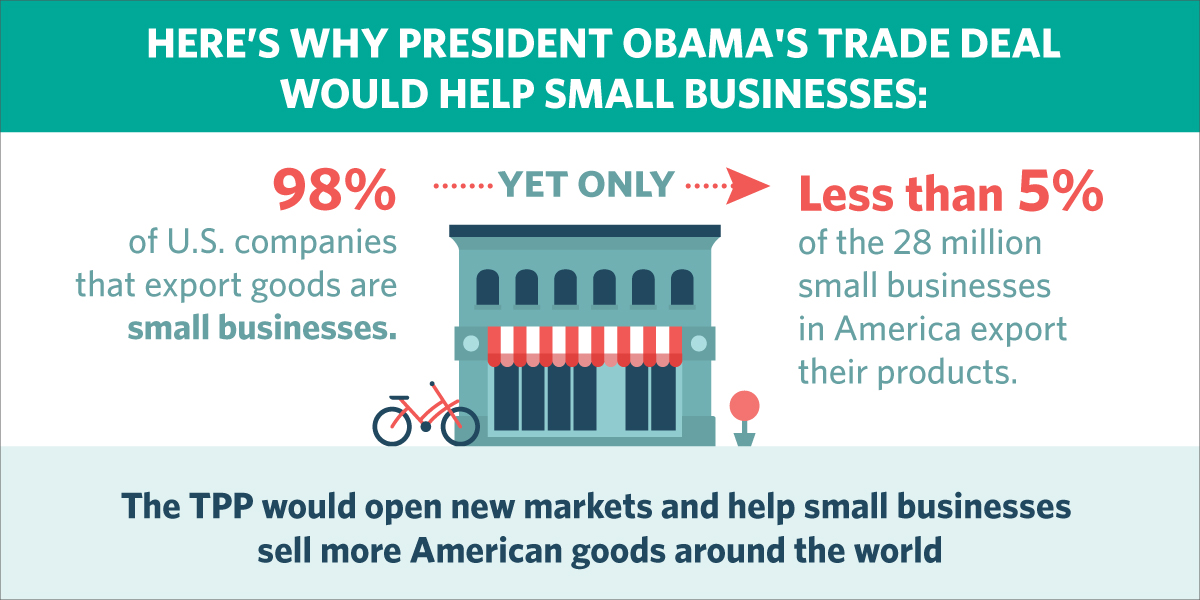
On a beautiful, sunny day just outside Portland, Oregon, the President dropped by Nike headquarters to talk about the impact his trade deal -- the Trans-Pacific Partnership (TPP) -- will have on American businesses, large and small.
Manufacturing and exports help drive the success of our businesses and the financial security of our workers. Companies that export their goods and services pay their employees up to 18% more, and are more able to expand and hire. In fact, Nike announced that the President's trade deal, if secured, could lead to the creation of up to 10,000 advanced manufacturing and engineering jobs -- and up to 40,000 indirect supply chain and services jobs -- here in the U.S. over the next decade.
But this isn't just about American icons like Nike. The TPP is a big deal for small businesses too. Right now, small businesses don't have the support they need to get their handcrafted, Made-in-America products out into the world.

The TPP will help change that -- opening markets for more goods and services stamped with three proud words: Made in America.
But, as the President has seen first-hand in Illinois, past trade deals haven't always lived up to the hype:
I saw for years, in Chicago and towns across Illinois, manufacturing collapsing, jobs drying up. Outsourcing is real. Folks didn’t just make that up. Some of our manufacturing base shifted over the last 25 years, and it wasn’t good for manufacturing and it wasn’t good for those communities, and it wasn’t good for workers. That’s the truth. It had benefits -- other jobs were created, we got cheaper goods. But there was real displacement and real pain. And so, for many Americans, this is not an abstraction; this is real.
"We've got to learn the right lessons from that. The lesson is not that we pull up the drawbridge and build a moat around ourselves. The lesson is that we've got to make sure that the trade deals that we do shape are the ones that allow us to compete fairly."
So here's what the President wants you to take away from what he's trying accomplish through trade:
When the playing field is level, nobody beats the United States of America.
It's time to #LeadOnTrade and pass a trade deal that helps Americans get ahead. http://t.co/6DWm9JG7yc
— The White House (@WhiteHouse) May 8, 2015


